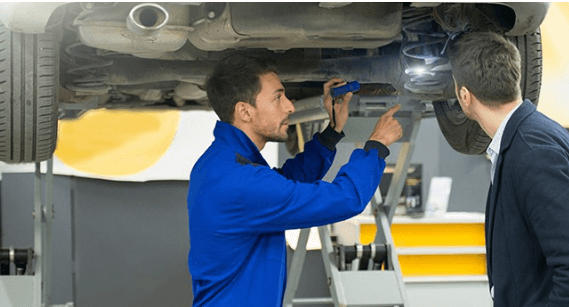
Your car’s steering and suspension systems are primarily responsible for keeping the vehicle stable while allowing the wheels to move independently. These systems degrade in handling and hasten tyre wear if there is any play or uncontrolled motion. The health of the steering and suspension systems directly impacts how straight a vehicle is.
What Function Does the Steering System Have?
The steering system under a car steering wheel cover enables the motorist to control the vehicle. The numerous pivoting joints, along with the steering column, connect the steering wheel to the suspension system. By doing this, the steering angle can remain the same while the motor wheels can move up and down as the highway surface needs.
For example, the internal front wheel has more acute tilting during cornering, ensuring the wheels turn as necessary. Like the suspension system and other modified accessories for cars, the steering system needs precise adjustment because any joint play might be dangerous.
Why Is a Suspension System Necessary?
In simplest terms, the vehicle’s suspension system attaches it to its wheels. It assumes accountability for two critical tasks as a result:
- Removing humps and other blemishes from the road gives the driver and passengers a smoother ride.
- Ensuring as much traction as possible by retaining traction with the wheels.
In the absence of a suspension system, a bump would cause the car’s wheels to ascend and descend parallel to the highway. The frame of the vehicle would receive this tremendous upward energy. This would cause the wheels to pull back from the surface prior to gravity taking over and forcing the car to crash. A mixture of shock-absorbents and springs is necessary to fine-tune the suspension mechanism. This will lessen these impacts for a smoother and more comfortable ride.
How Soon Should You Check Your Suspension and Steering Systems?
Setting up routine examinations of your suspension and steering and systems is a good idea. Finding and solving a problem early on, before it worsens and has more negative effects, is typically more straightforward, less expensive, and safer.
Signs That Your Suspension or Steering System Is Malfunctioning
Suppose you experience the following signs in addition to the previously stated issues. In that case, it is ideal that you physically examine your suspension and steering systems:
- Squats, Rolls, Or Nose Dives: When you shift in a different direction, your car leans on one side, slides from side to side, or dives head-on forward.
- Lower Limit: When your automobile’s tyres contact the bottom when the suspension is under squeeze because your vehicle’s suspension is insufficient to cushion the bump it is travelling over.
- Swaying Over Peaks: When an obstacle on the way causes your car to bounce frequently.
- Uneven Ride: When its possible to physically feel each road bump.
- Jerk Steer: Whenever your automobile encounters a bump, it makes the wheels turn to the left or the right without the driver’s involvement in turning the driving stick.
- Over- And Understeer: When rounding a bend, the front or rear of your vehicle loses grip. It’s terrible when the roads are slick.
- It Doesn’t Appear That the Power or Hard Steering Is Working: At this point, turning the steering wheel is more challenging.
- Unstable Steering: Steering has become too simple and feels messy, the opposite of the above harsh steering.
- The Steering Wheel Shakes: While you are unaware of any issue, your driving stick appears to shake or hop randomly.
- The Steering Wheel Shakes: Your steering wheel and vehicle rattle at 72 km/h (about 45 mph).
- The Steering Wheel Sways: When you maintain a consistent driving speed, your driving stick begins to sway sideways.
- Turning A Corner Sounds: When you turn a corner, the sole sign you notice is a clanging, clattering, or squeaking sound.
- The Electric Steering System Is Making Noises: The only sign you experience is the steering wheel is making noises when you fully spin the wheel in either direction.
- Uneven Corner: When your automobile is empty and waiting on level ground, you notice that one corner is lower than the rest.
Who Should Examine the Suspension and Steering Systems on Your Car?
Steering and suspension systems cehcks necessaite various specialised tools and advanced technical knowledge. A professional technician must carry out these safety examinations and maintenance when they are above your level of competence and the resources you have available because these systems are crucial to your safety.
Bottom Line
When was the last time you inspected and strengthened your vehicle’s front end? Your suspension system is simple to take for granted. However, normal deterioration can compromise your handling and safety. Sit down with Carorbis to discover more about steering and suspension.



